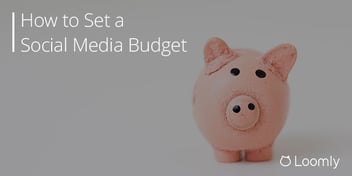Social Media ROI: 7 Tips To Maximize The Impact Of Your Strategy
Social Media ROI — or Return On Investment — is a key performance indicator that reflects the impact of your social media strategy on your company’s goals.
As a marketing team, your investment is almost always the time and cost of creating organic content, plus the cash spent on the budget for your social media campaigns. Depending on your company’s size, this will often include:
- Salaries
- Tools
- Content creation
- Advertising
- Marketing materials
- Freelancer fees
Pretty much anything that is spent on making your social media strategy work.
What counts as a return is dependent on your company’s goals for social media. As the need to be active on social media has grown, there are lots of metrics which are used:
- Income generated: are you bringing in more income than you spend?
- Brand awareness: is the number of people who know about your branding growing?
- Customer satisfaction: has social media influenced how people view the company?
- Growth rates: has social media impacted the year-on-year growth of sales?
- Conversion rates: are you convincing enough people to take the right action?
These goals should already have been communicated to you and your team, and if they have not, it is worth discussing them with the relevant interlocutor in yours (or your client’s) organization, so you can discuss realistic expectations.
Justifying the ROI of social media is key to securing your budget for the next year, as well as understanding and refining your strategy.
Before it comes to justifying your ROI, though, at a very high level, there are two ways you can dramatically improve it:
- Reduce spend: look for opportunities to save money.
- Increase impact: refine your strategy to increase the effectiveness.
In the rest of this guide, we are going to show you how to do both of them, so by the time that meeting comes around, you have a lean, mean ROI-generating social media machine…

Manage all your social media accounts in one place.
Craft, schedule, & auto-post content to all your social channels, then track analytics and manage interactions from a single, easy-to-use dashboard.
1. Repurpose Your Existing Content
Your website’s existing content is a gold mine of social media updates.
Your:
- Blog posts
- Podcast episodes
- YouTube videos
- Infographics
- Product photos
- Client case studies
- Customer testimonials
Can all be transformed into original social media updates for minimal time and effort.
Let’s look at one of the most common pieces of content marketing material to show you what we mean: the blog post.
Blog posts are filled with content that can be easily extracted and used to create an engaging social media post. (Sometimes it can really be as simple as copy and pasting.)
Take our blog post, The 10 Books Every Social Media Marketer Should Read, for example.
To create a unique, standalone update we took the books’ covers and put together a simple Instagram slider:
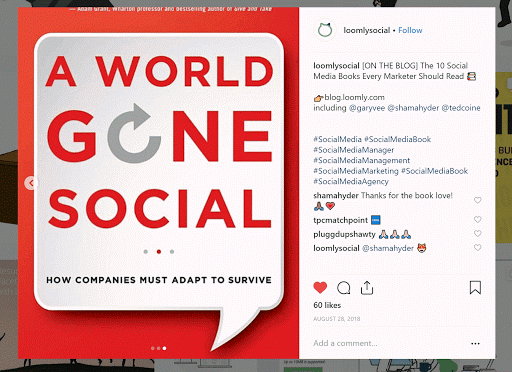
This was a simple update – it maybe took us three minutes to create it – and it received a lot of attention.
In fact, we even received a comment from one of the book’s authors, Shama Hyder:
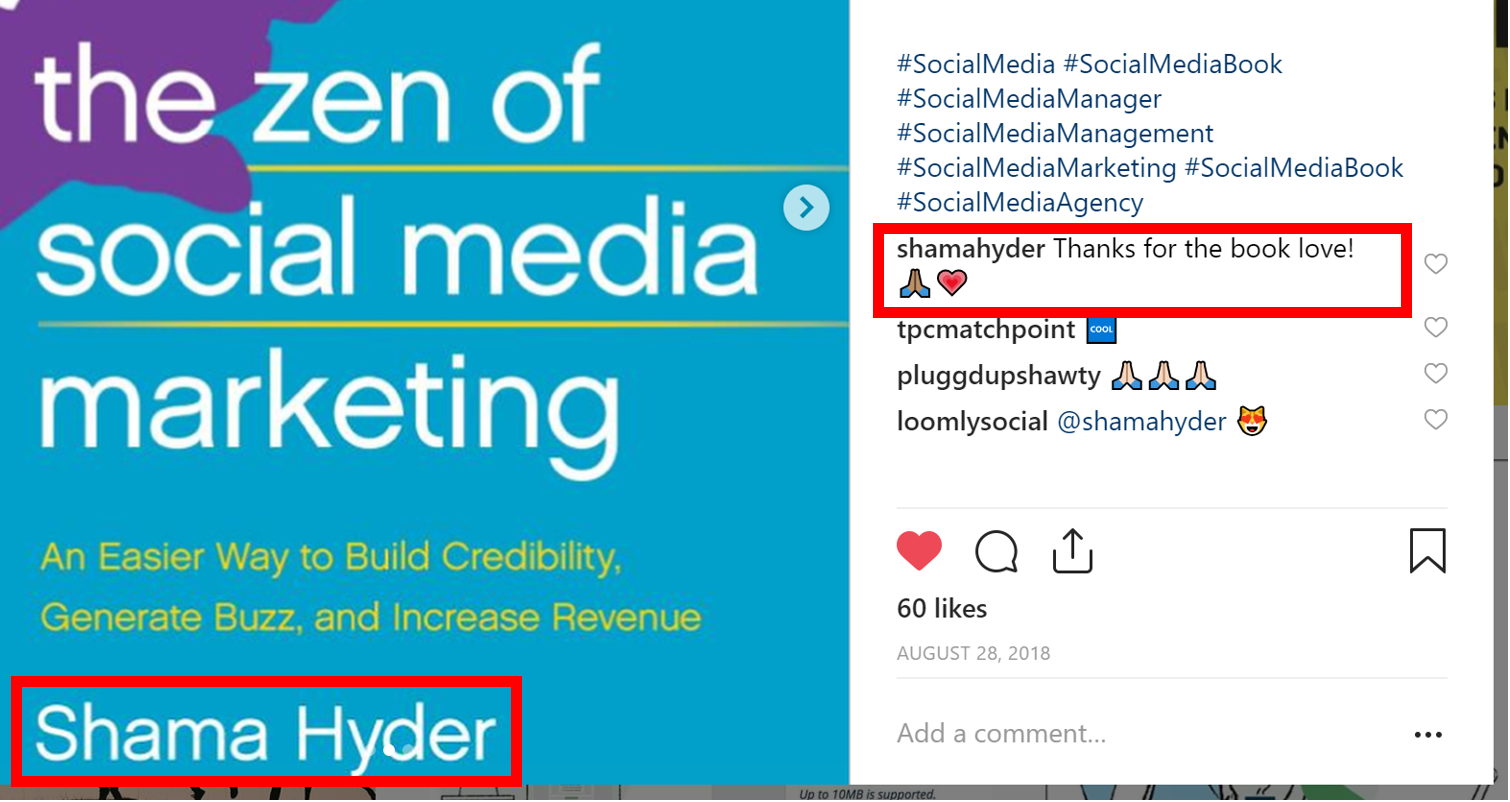
The slider is just one of many ways we could have repurposed the blog post, too. We also could have:
- Created a three-sentence summary of each book and posted it as an individual post.
- Created a 30-second video review of each book.
- Posted our favorite quote from each book.
- Turned the post into a shareable infographic.
- Created a live video where we talk about these 10 books.
- Used a section to answer a Quora question.
The key is to look for elements in your existing content which will make attractive, informative or entertaining standalone pieces of content.
The more native you can make this to the platform, the better. We predict native content will make a huge difference and get higher rates of exposure.
In the above example, we did this by taking advantage of Instagram’s slider feature. But, we also do this across platforms by using product screenshots, too.
We will often add layers, like commentary and arrows, to turn a simple image into a native-product tutorial. No need to link to an off-platform article or video!
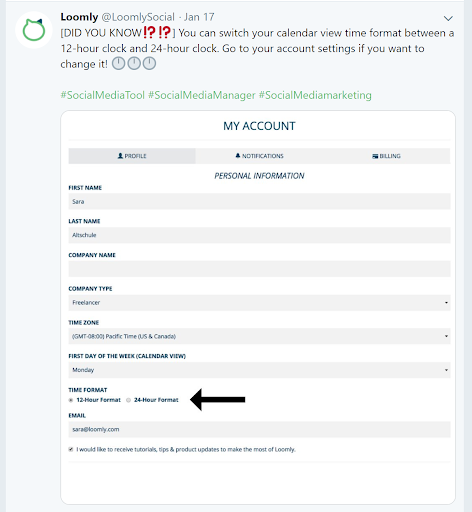
Before you worry about creating new and unique content, take the time to look for the existing opportunities in your old content.
2. Tag Products In Your Updates
Sales are the most direct form of ROI you can get.
There is no marketing manager or CEO in the world who can ignore the power of cold hard cash being generated by a social media campaign.
A great way to increase your sales from social media is by tagging products which feature in your updates.
Instagram is pioneering product tagging, with a focus on physical products, which make it especially easy for e-commerce brands who are taking advantage of the platform’s visual aspect:

These posts are best used sparingly and sprinkled throughout a much broader social media strategy. When considering these posts, aim for 80% of your content to be entertaining and informative, and keep this type of posts to the remaining 20%.
Setting this up is pretty simple:
- If your products are hosted on a website like Shopify or Squarespace, you can do this in just a few clicks by following Instagram’s guide here.
- If you are using a content management system like WordPress, you’ll need to set up your products in a Facebook catalog. You can read more about how to do that, here.
Once completed, just tag the product in your image, and all of your followers can click directly through to the product page.
3. Get Clear On Your Experiments (And Run One At A Time)
If you are like many marketing teams out there, you are running experiments but (may) not seeing the results — or the ROI — you were hoping for (just yet).
This can leave you feeling a bit more than frustrated, right?

In our experience, this is down to one or two common missteps made right at the start of the process. (Which we also had to learn about the hard way!)
Usually, it is one of two things:
- Too many changes: you adjusted too many variables, and what made the difference becomes hard to see.
- Not enough clarity: you have taken a different approach, but you are not quite sure what the sort of results you are looking for. You are just expecting to see a change.
The most useful tool we have found to remedy this is by employing the principle of “Ceteris Paribus”, or “all other things being equal”, when planning our social media tests.
In essence, this means focusing on the single variable you are going to change – like frequency, timing, content type, etc. – and assuming every other variable will stay the same.
This allows you to create a quasi “if this, then that” hypothesis for your test:
- If we change the post timings to before 08:00 CET, then we will see an increase in European engagement.
- If we start sharing infographics, then we will see an increase in organic reach through social sharing.
- If we start posting twice a day on Facebook, we will see an increase in the number of user comments.
With this hypothesis in place you have defined the one variable you are going to change, and gained clarity about the result you are expecting to see.
You can then implement the change, look for the outcome, and then use it to inform the future of your strategy.
To help you start doing this, we have created a free worksheet below where you can enter your hypotheses and results:
4. Double Down On The Channels That Matter
Let’s face it:
All marketing teams are prone to spreading themselves too thin.
We have hundreds — nay, thousands! — of post ideas for each social media platform and how we can turn everyday followers into raving-mad fans.
But trying to implement a strategy across every single platform often comes at a cost: to both your energy and your company’s budget.
This is why we recommend you double down on the channels where you can have the most impact, and remove any excess from your strategy.
By doing this, you can:
- Free up more budget to invest in high-ROI channels.
- Spend more time creating high-quality native content.
- Better test, track and improve your strategy with more focused analytical data.
All of which positively impact your return on investment and enable you to create a targeted, effective strategy which produced greater results.
5. Refine Your Social Media Workflow
One of the most controllable ways to improve your social media ROI is to save money on implementing your campaign
Research shows that 20 to 30 percent of a company’s revenue can be wasted on inefficient workflows, which in real-time, looks a little like this:

To aid this, and free up some extra cash, you should consider implementing an efficient social media workflow which is approved and understood by all team members involved.
Lucky you, we have a comprehensive free guide on how to do that, right here.
6. Track Every Link Click Possible
2019 is the year of data-driven decisions.
The more data you can have to inform the future of your strategy, the better.
One way to gain insights and understand the intent and actions of your audience is by tracking link clicks (for instance with Loomly & Loom.ly).
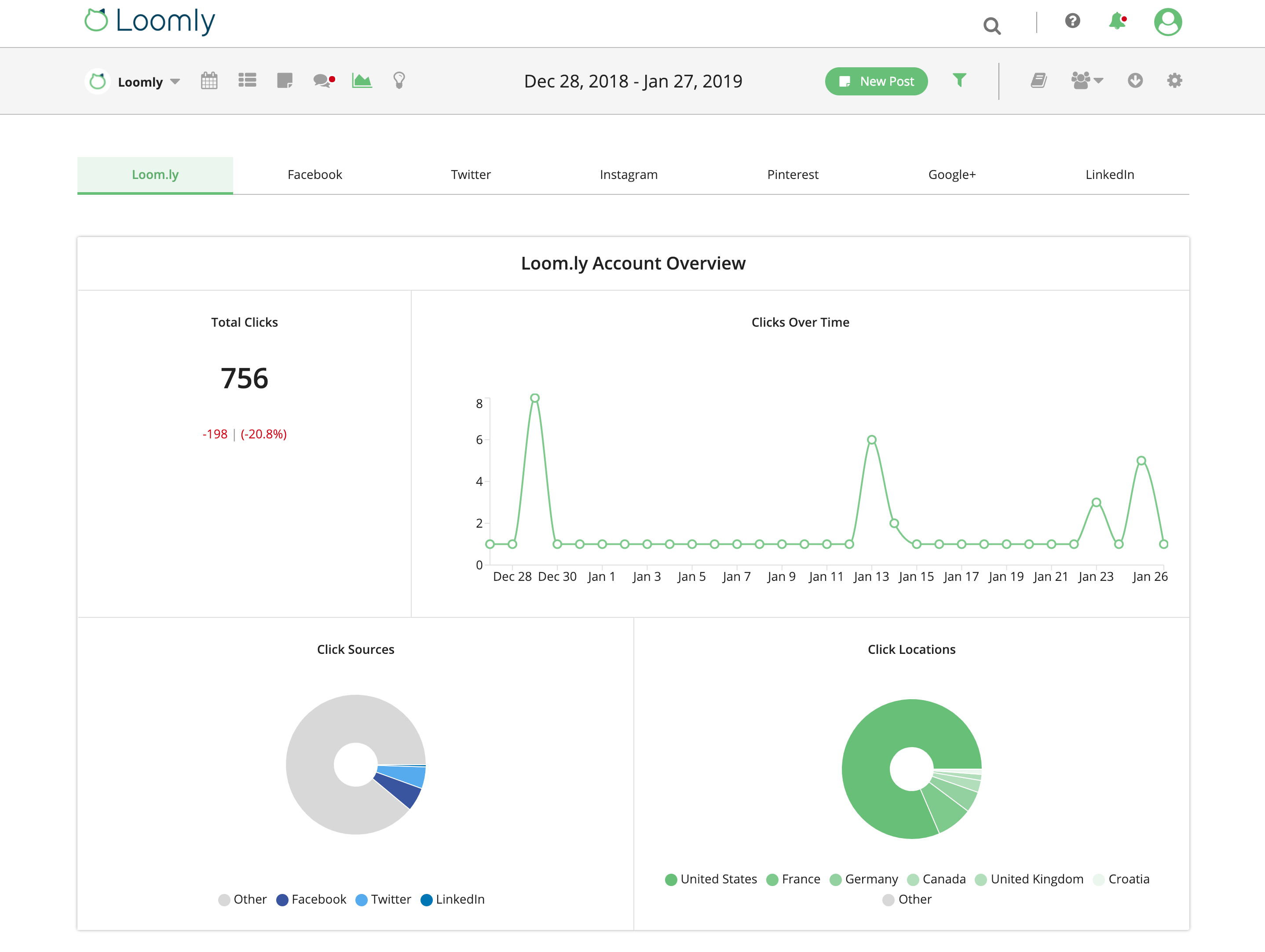
Ideally, you should be tagging every link used in your social media profiles and updates so you can:
- See where your traffic comes from
- Understand which types of posts drive the most traffic
- Test call to actions and copywriting formulas
This can be easily set up for free using Google’s UTM tracking tool, in conjunction with Google Analytics:
![]()
Once active you can pinpoint the exact updates which result in the biggest spike in website traffic.
However, doing this with Google Analytics can require you to juggle lots of different links and campaigns, so we have created a way to simplify it.
With Loomly, you can track all of your links in one easy-to-understand dashboard, alongside the rest of your social media analytics (per the above).
7. Plan Your Content Further In Advance
We recommend all marketing teams have their updates planned a minimum of two-to-four weeks in advance. Why?
Because having a long-term content plan comes with a lot of great benefits:
- Fewer mistakes.
- Higher quality posts.
- More consistent schedule.
- More time to accurately analyze data.
These elements all help to improve the ROI of your social media strategy by saving you money on fixing problems and giving you ample time to make data-driven decisions.
Basically, you spent less time putting out fires and stressing about tight deadlines, and more time creating an optimal social media strategy.
Knowing this is one of the reasons we created Loomly in general and this step-by-step guide to create and manage your social media calendar.
We knew having enough breathing room and foresight to create a strategy would lead to better results. And, it’s even better when that calendar contains all of the analytics and tracking tools you need to run a good campaign, right?
Wrapping This Up…
We trust by now you are ready to boost the impact of your social media strategy this year and get more bang for your buck.
Although social media ROI can be defined in many ways, there are two ways to increase ROI that all social media managers need to be aware of:
- Reduce spend: save money on the implementation of your strategy.
- Increase impact: increase the effectiveness of your social media strategy.
The seven tips outlined in this list will help you to do both of those, and ensure you generate your best ROI yet.
And, before you go…


